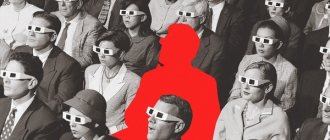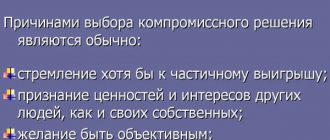Initially, ordinary experimental psychological tests were used as tests. In form, they were similar to laboratory research techniques, but the meaning of their use was fundamentally different, because the task of a psychological experiment is to clarify the dependence of a mental act on external and internal factors, for example, the nature of perception - on external stimuli, memorization - on the frequency and time distribution of repetitions and etc.
During testing, the psychologist records individual differences in mental acts, assessing the results obtained using some criterion and in no case changing the conditions for the implementation of these mental acts.
The test method has become widespread. A new step in its development was taken by the French physician and psychologist A. Binet (1857–1911) , creator of the most popular series of tests.
Before Binet, as a rule, differences in sensorimotor qualities were determined - sensitivity, reaction speed, etc. But practice required information about higher mental functions, usually denoted by the concepts of “mind” and “intellect”. It is these functions that ensure the acquisition of knowledge and the successful implementation of complex adaptive activities.
In 1904, the Ministry of Education commissioned Binet to develop methods that could be used to separate children who were capable of learning, but lazy and did not want to learn, from those suffering from birth defects and unable to study in a normal school. The need for this arose in connection with the introduction of universal education. At the same time, it was necessary to create special schools for mentally handicapped children. Binet, in collaboration with Henri Simon, conducted a series of experiments to study attention, memory, and thinking in children of different ages (starting from 3 years). Experimental tasks carried out on many subjects were tested according to statistical criteria and began to be considered as a means of determining intellectual level.
Intelligence Tests
Today, no fewer methods for assessing the level of intellectual development have been created than theories of intelligence. Since the very first, tools for measuring and assessing intelligence have become increasingly precise and standardized. Let's list them in chronological order.
Binet-Simon test (1905)
In 1885, the French government invited French psychologist Alfred Binet to develop a test to assess the level of intellectual development of children. The country had just passed laws requiring all children between the ages of six and fourteen to attend school, so a test was needed to screen out those who needed special educational accommodations. Binet and his colleague Theodore Simon compiled a series of questions on topics not directly related to school education
They assessed memory, attention, and problem-solving skills, among various other abilities. Binet found that some children answered more difficult questions, more suitable for older children, while their peers could only answer questions intended for younger children
Based on his observations, Binet developed the concept of mental age, a tool that allows one to evaluate intelligence based on the average abilities of children of a certain age group. The Binet-Simon Scale was the first test to assess intellectual development and served as the basis for all tests used today.
Stanford-Binet Intelligence Test (1916)
After the Binet-Simon scale became known in the United States, Stanford University psychologist Lewis Terman standardized it and began using it to test American children. An adapted version called the Stanford-Binet Intelligence Scale was published in 1916. This test uses a single indicator - intelligence quotient (IQ), which is calculated by dividing the mental age of the person being tested by his real age and then multiplying the resulting number by 100.
Army Alpha and Beta Tests (1917)
With the outbreak of World War I, the US Army began to need to assess the mental abilities of a huge number of conscripts. To solve this difficult problem, psychologist Robert Yerkes (then president of the American Psychological Association and chairman of the Committee on Recruit Psychological Evaluation) developed two tests called the Army Alpha Test and the Army Beta Test. More than two million people have completed them; This is how army personnel services determined what tasks could be assigned to a recruit and what position he was capable of filling.
David Wechsler Intelligence Scales (1955)
In 1955, psychologist David Wechsler developed another test to assess the level of intellectual development - the Wechsler Intelligence Scale for Adults. It was subsequently modified, and today a modified third version is used.
If in the Stanford-Binet test the level of intelligence is calculated on the basis of a person’s mental and true age, then when testing on the Wechsler Intelligence Scale for Adults, the test taker’s score is compared with the indicators of other people in his age group. The average score is 100. Today this tool is considered a standard method for testing human intellectual development. Published by econet.ru
Binet–Simon scale. The concept of "mental age". Stanford–Binet scale
The first Binet-Simon scale (series of tests) appeared in 1905. Then it was revised several times by the authors, who sought to remove from it all tasks that required special training. Binet proceeded from the idea that the development of intelligence occurs independently of learning, as a result of biological maturation.
A. Binet's scale in subsequent editions (1908 and 1911) was translated into German and English. The second edition of the scale (1908) was different in that it expanded the age range of children - up to 13 years, increased the number of tasks and introduced the concept of mental age. The second edition of the Binet scale is the most widely used. The last (third) edition of the scale, published in the year of Binet's death, did not make significant changes.
Items in the Binet scales were grouped by age (from 3 to 13 years). Specific tests were selected for each age. They were considered appropriate for a given age level if they were solved by the majority of children of a given age (80–90%). Children under 6 years of age were given four tasks, and children over 6 years of age were given six tasks. The tasks were selected through a study of a large group of children (300 people).
The indicator of intelligence in the Binet scales was mental age, which could diverge from chronological age. Mental age was determined by success in completing test tasks. The test began with the presentation of test items corresponding to the child’s chronological age. If he coped with all the tasks, he was offered tasks from an older age group. If he solved some of them rather than all of them, the test ended. If a child could not cope with all the tasks of his age group, he was given tasks intended for a younger age. The tests were carried out until the age was revealed, all the tasks of which were solved by the subject. The maximum age for which all tasks are solved by the test subject is called the basic mental age. If, in addition, the child also completed a certain number of tasks intended for older age groups, then each task was assessed by the number of “mental” months. Then a certain number of months was added to the number of years determined by the basic mental age. Example: a child solved all the tasks intended for seven-year-olds and two tasks intended for eight-year-olds. The number of months is calculated as follows: 12 months: 6 (number of tasks for eight-year-olds) = 2 months. (“price” of one task); 2 months × 2 = = 4 months. So, the mental age of the child is 7 years and 4 months.
A discrepancy between mental and chronological age was considered an indicator of either mental retardation (if mental age is below chronological) or giftedness (if mental age is above chronological).
The second edition of the Binet scale served as the basis for verification and standardization work carried out at Stanford University (USA) by a team of employees led by L. M. Theremin . This version of the Binet test scale was proposed in 1916 and had so many serious changes compared to the main one that it was called the Stanford-Binet scale. There were two main differences from Binet's tests: the introduction of intelligence quotient (IQ), determined by the relationship between mental and chronological age, as an indicator for the test, and the use of a testing evaluation criterion, for which the concept of a statistical norm was introduced.
Application
The test consists of four parts:
- Verbal reasoning;
- Quantitative Reasoning (Calculations);
- Abstract visual reasoning;
- Short-term memory.
The total score is presented as an IQ score.
Processing of the test should be carried out immediately after its presentation, since the following tasks are given depending on whether the child has completed the previous ones. Testing of younger children usually takes 30-40 minutes.
In addition to the IQ score, the Stanford-Binet test allows you to get an idea of some of the child’s personal qualities (activity, ability to concentrate, diligence, self-confidence). Qualitative observations should be recorded and then interpreted independently of the test results.
The Stanford-Binet test can be used to assess the abilities of both normal children and children with developmental disabilities. G. Lefrancois writes that the test can serve as an early diagnostic test for identifying autism, as well as for identifying gifted children.
The qualifications of the experimenter are very important for conducting the Stanford-Binet test. In order to obtain reliable results, an extremely experienced experimenter is required, since slowness, indecisiveness or minor changes in the wording of tasks can significantly affect the test results.
The concept of intellectual quotient (IQ). Works by V. Stern
The IQ coefficient was proposed by V. Stern , who considered a significant drawback of the mental age indicator to be that the same difference between mental and chronological age for different age levels has different meanings. To eliminate this drawback, Stern proposed determining the quotient obtained by dividing mental age by chronological age. He called this indicator, multiplied by 100, the IQ. Using this indicator, it is possible to classify normal children according to the degree of mental development.
Another innovation of Stanford psychologists was the use of the concept of a statistical norm. The norm became the criterion with which it was possible to compare individual test indicators and thereby evaluate them and give them a psychological interpretation.
The Stanford-Binet scale was designed for children aged 2.5 to 18 years. It consisted of tasks of varying difficulty, grouped according to age criteria. For each age, the most typical average performance indicator (x) was equal to 100, and the statistical measure of dispersion, the deviation of individual values from this average (a) was equal to 16. All individual indicators on the test that fell within the interval x ± a, i.e. limited to numbers 84 and 116, were considered normal, corresponding to the age norm of performance. If the test score was above the test norm (more than 116), the child was considered gifted, and if below 84, the child was considered mentally retarded.
The Stanford–Binet scale has gained popularity all over the world. It had several editions (1937, 1960, 1972, 1986). In the latest edition, it is still used today. The IQ score, obtained on the Stanford-Binet scale, has become synonymous with intelligence for many years. Newly created intelligence tests began to be tested for validity by comparison with the results of the Stanford-Binet scale.
Literature
- Binet A., Simon T.
Methods for studying mental giftedness. GIZ. Ukraine, 1923 - Burlachuk L. F.
Psychodiagnostics: Textbook for universities. - St. Petersburg: Peter, 2006. - 351 p.: ill. — (Series “Textbook of the New Century”) - Venar Ch., Kerig P.
Psychopathology of the development of childhood and adolescence. - St. Petersburg: Prime-Eurosign, 2007. - 672 p. - Godefroy J.
What is psychology? Volume 2. - M.: Mir, 1992. - 376 p. - Ilyina M. N.
Psychological assessment of intelligence in children. - St. Petersburg: Peter, 2006. - 368 p. - Lefrancois G.
Applied educational psychology. - St. Petersburg: Prime-Eurosign, 2007. - 576 p. - Bain, S. K., & Allin, J. D. (2005). Book review: Stanford-Binet intelligence scales, fifth edition. Journal of Psychoeducational Assessment, 23, 87-95.
Multiple Intelligences
According to psychologist Howard Gardner's theory of multiple intelligences, it is impossible to quantify intelligence. The scientist argued that there are eight different types of intelligence, based on relatively independent abilities and skills, and that some of these abilities can be developed in an individual better than others. Initially, he identified seven independent types of intelligence: spatial (the ability to perceive visual and spatial information), verbal (the ability to speak), logical-mathematical (the ability to logically analyze a problem, recognize relationships between objects and think logically), bodily-kinesthetic (the ability to move and exercise physical control over one's own body), musical (the ability to perceive pitch, rhythm and timbre of sound and operate with sound patterns), interpersonal (the ability to understand and interact with other people) and intrapersonal (the ability to be aware of one's own feelings, emotions and motives). Subsequently, the scientist included naturalistic intelligence in his model - the ability of a person to live in harmony with nature, explore the environment, and learn from the example of other species.
General intelligence
British psychologist Charles Spearman proposed a two-factor theory of intelligence, according to which two factors can be distinguished in the structure of intelligence: the g-factor, that is, the general or general ability, and the s-factor, or specific to a particular mental activity. Thus, according to the scientist, there is a certain general intelligence that determines the mental abilities of a person as a whole, or g-factor; and it can be accurately measured through a special test. Spearman found that people who scored well on one cognitive test also did well on other intelligence tests, and that those who scored poorly on one test did not do well on others. Based on this, the psychologist concluded that intelligence is a general cognitive ability that can be measured and quantified.
Practice requirements (mass examination of large groups of subjects)
The next stage in the development of psychological testing is characterized by a change in the form of testing. All tests created in the first decade of the 20th century were individual and allowed experiments with only one subject. They could only be used by specially trained people who had sufficiently high psychological qualifications.
These features of the first tests limited their distribution. Practice required testing large masses of people in order to select the most prepared for a particular type of activity, as well as distribute people into different types of activity in accordance with their individual characteristics. Therefore, in the United States during the First World War, a new form of testing appeared - group testing.











